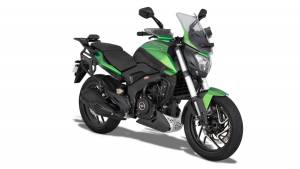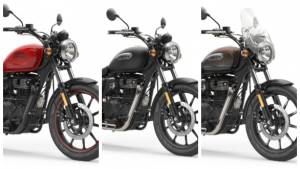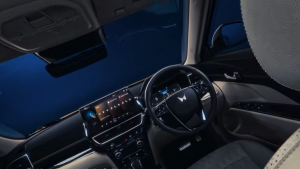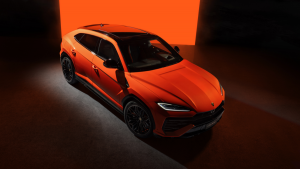Bajaj Dominar 400 first ride review
"India needs an affordable 400." I've lost track of the number of times I've heard that line over the years, but the stars have finally aligned and Bajaj has just such a machine for us in the Dominar 400. It offers the right mix of everything we Indians want in our automobiles - smart style, lots of features and killer pricing! Here are our first impressions of the motorcycle that Bajaj hopes will make a dent in the 300cc-plus market that is currently ruled by Royal Enfield.
Design and style
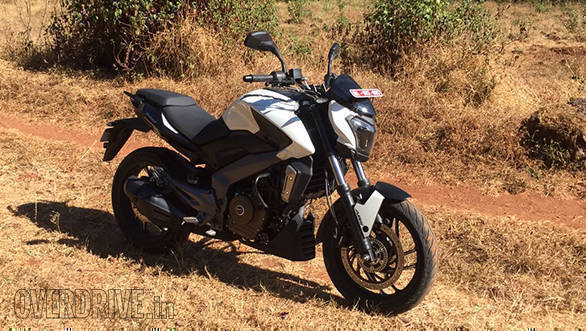
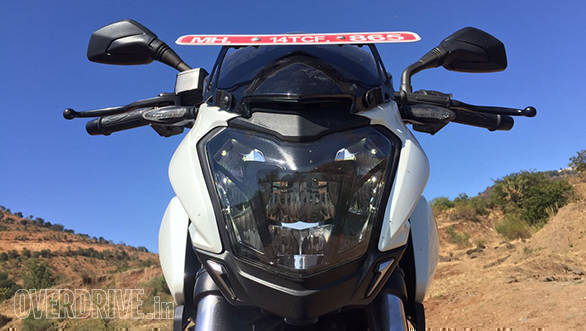
The Dominar is a power cruiser and Bajaj says the overall stance was modelled on that of a lion - long, low and powerful. To my eyes, the stance is more inspired by a certain Italian machine. In the flesh, however, the Dominar carves out its own identity with a design that closely resembles the handsome CS 400 concept from 2014 while also bearing some subtle similarities to the Pulsar NS.
The most eye-catching feature is the striking full LED headlamps. We only got to sample them in a tunnel but they seem very impressive. Strangely, Bajaj gives you four levels of adjustability with two separate switches. The one on the right offers an always-on setting that keeps it on a high beam which we're told is to make the bike more visible in the day. Slide the switch left for a night mode that drops the beam to a lower output that won't blind coming traffic. However, on the left grip is another button - this time a standard high and low beam switch but this fires up a separate LED cluster in the headlamp. Just one standard low-high beam switch would have been much simpler.
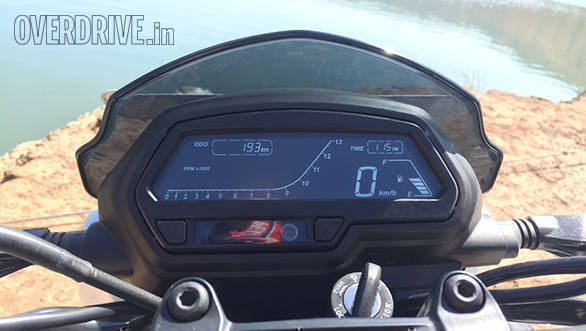
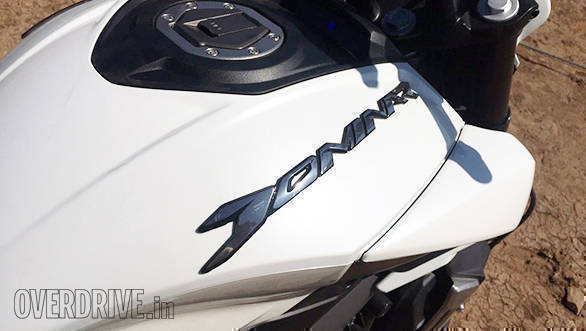
Moving down, the 13-litre fuel tank has a sleek, long design that takes influence from the Diavel and features a similar split instrument cluster. The main unit is fully digital and lies in the conventional place at handlebar. It uses white digits on a black screen and is easy to read, even in direct sunlight. The console displays a rev counter, speedometer, clock, fuel gauge and two trip meters. There's no real-time or average fuel efficiency, and I miss having a gear position indicator. The lower screen houses most of the warning lamps like ABS, side-stand down, battery, check engine light and more. I found that the lower screen lies below the jaw of a full-face helmet and you only see it if you consciously look down.
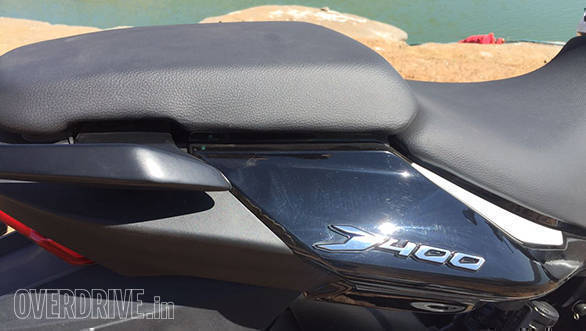
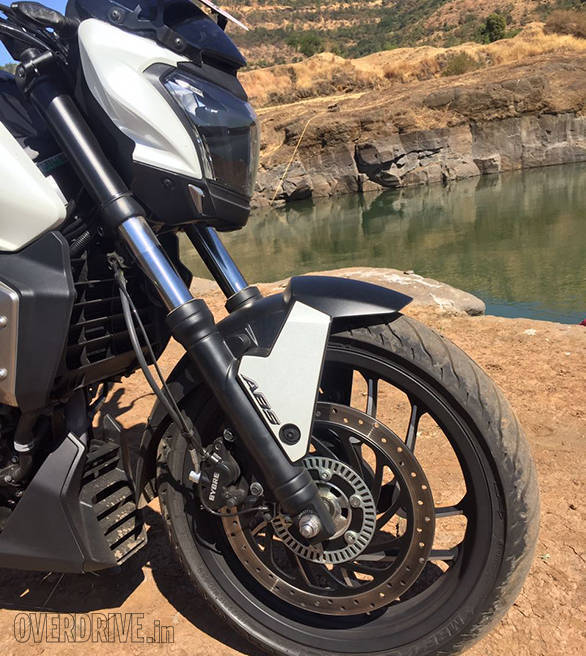
Another standout feature is the machined alloy wheels that look premium and expensive. The rear end is quite minimal and characterised by a sleek exhaust and Diavel-inspired dual LED brake lights. Both the rider and pillion seats are large, wide and quite flat. We didn't get to try the rear seat but the front is like the KTM's - a little firm but comfortable on long rides. While there are quite a few expensive-looking bits on the bike like the headlamp and alloy wheels, there are also some sacrifices made in the name of cost. The front forks share the same beefy 43mm diameter as the KTM's but are quite different and are installed conventionally, not upside down. That makes them cheaper to make and also easier to service. The front brake caliper is axially mounted, not radially, and the footpeg assembly is a single unit that doubles up as a passenger footpeg and exhaust holder. Finally, swingarm is a stamped metal unit, not the more expensive die-cast type on the KTM's.
Interestingly, none of these cost-saving measures creates an impression of cheapness. In fact, special mention must be made on quality and fit/finish. Bajaj has put considerable effort into this department and the results show. The company is particularly proud of the paint quality and says they source from the same company that supplies to luxury car brands like Jaguar. But it goes beyond that - fit and finish is cleaner, panel gaps are tight and mostly uniform, and the welding on the swingarm is nice and clean. Best of all, after a day of hard riding, nothing was rattling on either of the two bikes I rode. That's a good start and we'll be keen to see how it holds out when the test bikes arrive.
Engine and performance
The Dominar 400 uses the same 373.2cc block from the KTM 390 Duke and RC, but in reality this is a very different-feeling motor. The engine is pleasantly smooth and refined at start-up. It actually sounds more like a refined NS 200, and the smooth thrum actually reminds a bit of the Mojo as well. There is precious little similarity to the Duke's exhaust note, and I doubt anyone will actively dislike this noise, unlike the polarising KTM note. It must be said that the Dominar sounds nothing like the TV advertisement would have you believe, the bike needs about three more cylinders to produce that kind of music.
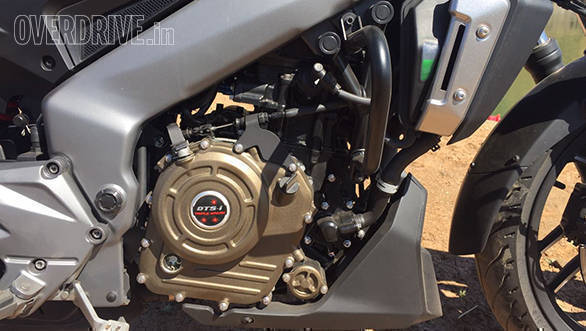
The differences to the KTM run far deeper than just sound. The entire head is new and utilises Bajaj's triple spark plug layout. Additionally, Bajaj went for a simpler SOHC four-valve set-up which brings the benefit of lower cost and better bottom-end torque. Besides which, as with the NS 200, the triple spark layout doesn't allow much space for double overhead cams.
The Dominar uses liquid-cooling, and heat management is impressive. I stuck myself in a long traffic jam getting out of Pune, and at no point did the motorcycle get uncomfortable hot.
Bajaj has taken a conscious decision to favour rideability over outright performance. The result shows in an engine that produces equal power and torque, 35PS and 35Nm respectively. Power is a good 8.5PS down on the KTM's, but torque is the exact same figure, except that it peaks 500rpm lower at 6,500rpm.
On the road, the Dominar feels easy and accommodating. There's none of the typical KTM low-rev lurchiness and the motor is quite tractable. Power comes in smooth and there is a good surge of torque from as low as 2,500rpm which boosts city rideability. The Dominar pulls cleanly as the revs rise with a smooth but enjoyable surge coming in at around 5,500rpm. The redline lies just north of 9,000rpm but things get quite loud and vibey above 7,000rpm, and anything above 8,000rpm just feels unnecessary.
Performance is brisk but not ballistic. It's all about the meaty mid range. Bajaj's 0-100kmph time of 8.23s isn't eye-opening, but that's not what this bike is about. Highway cruising is far more important, and the Dominar gets the job done fairly well. 100kmph in 6th has the engine hovering below 6,000rpm, while 120kmph is at about 7,000rpm.
However, the bike could be better still and that's because it isn't vibration free at speed. From 4,500rpm and up, a minor buzz starts to set in at the bars and pegs and increases as the speeds rise. 130kmph and beyond is possible, but the vibrations eventually lead to mildly numb fingers at the end of a long stint. I should clarify, these vibrations don't make the Dominar a turn-off to ride fast. I just wish they were better damped out. For those of you interested in top speed, I saw 158kmph on the clocks. 160kmph should be possible but speedo error is to be accounted for.
Ride and handling
The Dominar uses the same steel perimeter frame as the Pulsar NS/AS/RS but strengthened at the top and bottom ends for this application. The subframe is a trellis-style tube structure. Going with the long wheelbase and raked-out front end, I expected the Dominar to feel heavy and slow steering. Surprisingly, the motorcycle is quite nimble in the city, and filtering through traffic quickly becomes an effortless exercise. The turning radius is decently tight, and the Dominar doesn't need to be muscled around like a Mahindra Mojo. A friendly 800mm seat height helps here as well.
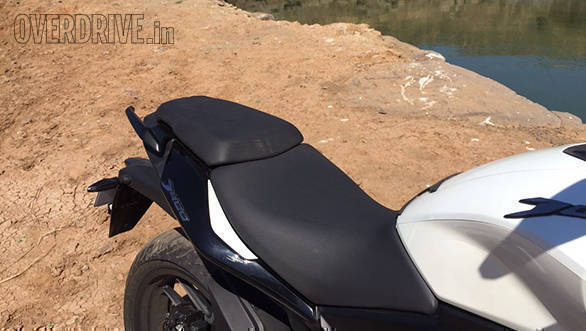
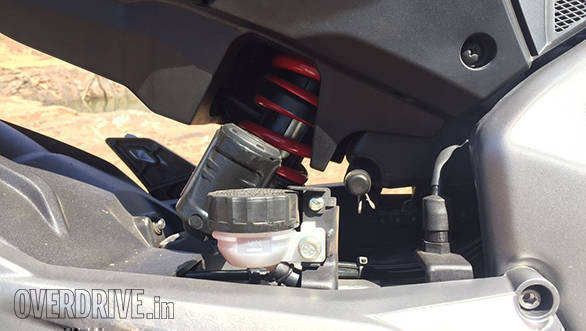
Ride quality springs (hehe) another surprise - it's firmer than I expected and is quite sporty, nearly bordering on stiff. We've already discussed the conventional front forks, but Bajaj has a clever solution for the rear. The shock uses two springs with different rates, one on top of the other to better deal with all the different disturbances from our roads. It's not plush, but rough and rutted roads are dealt with quite well and only the worst of potholes will kick you out of your seat. This is where the rear-set footpegs are appreciated, making it much easier to stand up and ride out the rough stuff than it is on the Mojo's forward-set pegs. The riding position itself is a nice mix of commitment and comfort. The handlebar is at a comfortable position and keeps the rider upright, but the pegs are set a little back (not as much as the KTM's), which liberates cornering clearance.
Conclusion
The Dominar 400 does a lot of things very right. Bajaj has tamed the angry, frenetic nature of the KTMs that was loved by a few but intimidated many. The Dominar is an easy, approachable motorcycle which is comfortable in the city, quick on the highway and capable in the hills. The value it proposes is stunning, especially considering features like that excellent LED headlamp, ABS and 35PS - all for just Rs 1.5 lakh, ex-Delhi. Even quality is at new high for a Bajaj. After a day with the bike, the only real negative I come away with is the vibrations. Again, it isn't a deal-breaker, but this bike would be an excellent highway machine if it were a little smoother. Right now, it's just a good one. But in all seriousness, who can argue with that price!
Starts Rs 2,16,648
373cc
6-Speed
40.00
35.00
-NA-
Starts Rs 2,52,928
373cc
6-Speed
43.50
37.00
25.00 Kmpl
-NA-
295cc
6-Speed
26.29
30.00
-NA-
Related Stories
Top Stories
Latest Videos
Most Popular
- Budget Sportbike Showdown: Kawasaki Ninja 500 vs Aprilia RS 457 vs Yamaha YZF-R3
- 2014 Triumph Daytona 675 vs 2024 Kawasaki ZX6R - A Decade of Evolution in Supersport Motorcycles
- Mumbai-Pune Expressway speed restrictions updated
- Nissan Magnite EZ-Shift review - is the AMT any good?
- Nitin Gadkari states that tax on Hybrids should be reduced to 12 percent in the coming future

